Re-Framing 95: Preview & Tour
Join Untapped New York's Chief Experience Officer Justin Rivers and Artist-in-Residence Aaron Asis for a one of a kind activation weekend!


The Rockaways in Queens are at once an idyllic oceanside escape from the grind of the city, a diverse collection of towns and complexes, and a haunted, distant otherworld with countless mysteries waiting to be explored. The peninsula, located at the juncture between Brooklyn’s Marine Park and Long Island’s Inwood, was originally inhabited by Lenape Native Americans, and was sold to the Dutch in 1639. In the early 20th century, a railroad opened the Rockaways to the rest of New York City. Around then, Manhattanites flocked to the Rockaway Peninsula in great numbers. They were seeking a beachfront escape, and they found it at the Rockaways’ many seaside hotels. In the mid-20th century, partly thanks to the efforts of Robert Moses which led to improved transportation, it became a more residential area.
Today, Rockaway remains a beachfront destination and a thriving residential area, and you can even take the New York City Ferry there! Certain parts have also attracted the adventurous, becoming destinations for exploration. It has also borne the brunt of many natural disasters, especially Hurricane Sandy. This turmoil and change have left the Rockaways with more than a few secrets hidden along its shores, forests, and towns.
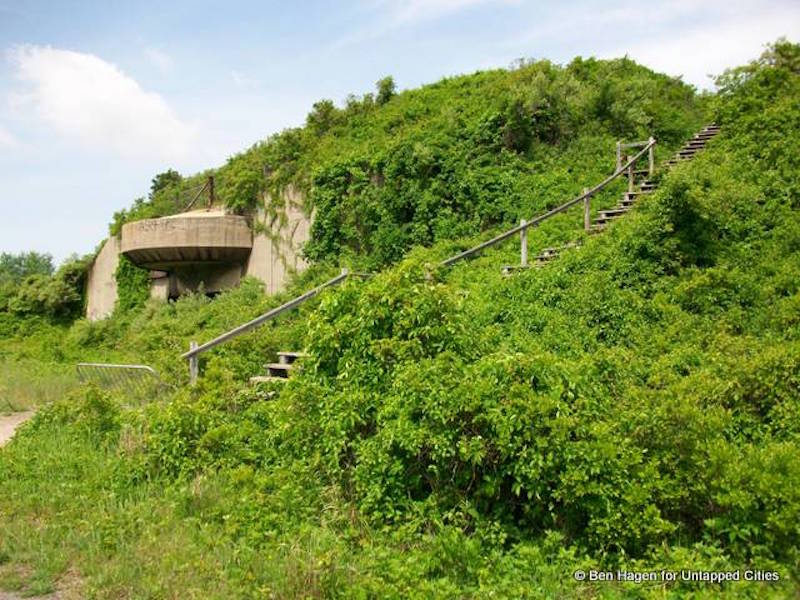
An abandoned military base by the ocean sounds like an urban explorer’s dream or a poetic device, but it really exists at Fort Tilden, the ex-Army base that is now being reclaimed by nature. The fort was constructed way back in 1917, and it served as a fort in both World Wars as well as the Cold War. During World War I, it served as a fort that housed ammunition hoists, electric lights, and telephones. During World War II, over ninety new buildings were added to the fort, and it became a centerpiece of American defense.
After the war, Fort Tilden was converted to 350 apartments for soldiers and their families. In 1951, the fort was needed again for the Cold War, and so it was vacated and then used as a storage space for Nike Ajax missiles, and later for the nuclear-capable Nike Hercules missiles until 1958. Allegedly, the nuclear missiles were something of an open secret at the time. Now they are memories, slowly disappearing as the sea creeps back in and wears the building down.
The area is full of the hulls of silos, and visitors can see the huge concrete batteries built into bluffs, each of which housed a 70-foot-long cannon way back when. Its labyrinth of abandoned rooms and amphitheaters now hosts the odd art installation and performance, and its abandoned chapel was most recently used for a Hurricane Sandy benefit.
Fort Tilden is unique in its position at the crossroads between nuclear war, an intrinsically human invention and an emblem of humanity’s destructive power, and the sea, nature’s greatest force and the ultimate reminder of humanity’s insignificance in comparison to the natural world. Left to their own devices, these forces of fire and water have found a surprising harmony with each other at Fort Tilden, where sea breezes tangle with scrap metal. Its solemn metal walls and concrete structures are now homes for vines and butterflies. Fort Tilden is on the National Register of Historic Places.
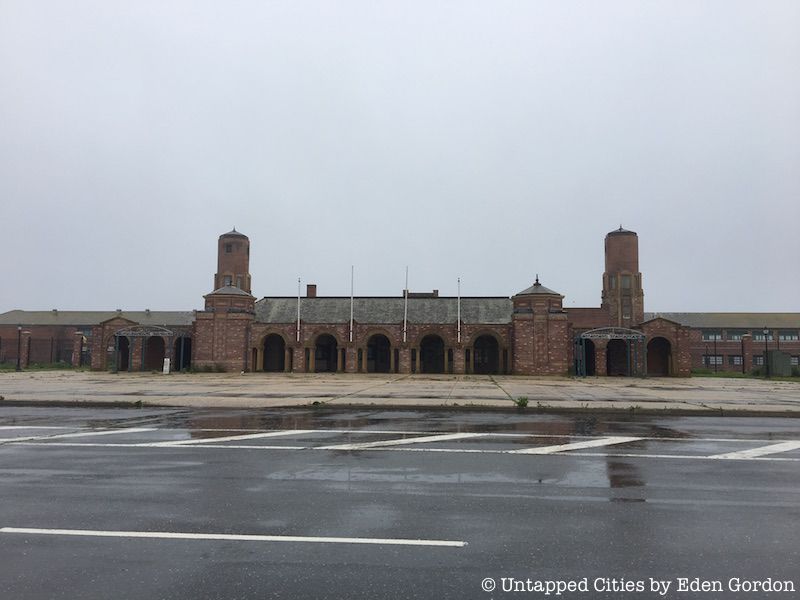
In 1932, the bathhouse in the center of Jacob Riis Park opened to the public. At the time, the park catered to a wide variety of demographics, and its beach was called the “People’s Beach.” The bathhouse was a gleaming crown jewel during its heyday, with its stylish design and octagonal red brick towers stretching up to the sky.
Over the years, the bathhouse fell into ruin due to neglect, lack of funding, and natural disasters. In 1990, a restoration effort began but was never finished. Restoration efforts failed in part because of the building’s sheer size: it actually consists of four buildings. While the entry pavilion has benefited from successful restorative projects, the beachside was ravaged by Hurricane Irene, which knocked down doors and piled four feet of sand inside. After Hurricane Sandy, which further damaged the property, $4 million in restoration efforts failed to repair the bathhouse. Now however, there is hope for the once abandoned buildings, as a team which involves architect firm Beyer Blinder Belle, CBSK Developers, Brooklyn Bazaar, and Aulder Capital is working to transform the derelict buildings into a new 28-room hotel with beachfront eateries, bars, event spaces and retail. The nearly $50 million restoration project is projected to begin a phased opening in the spring of 2024.
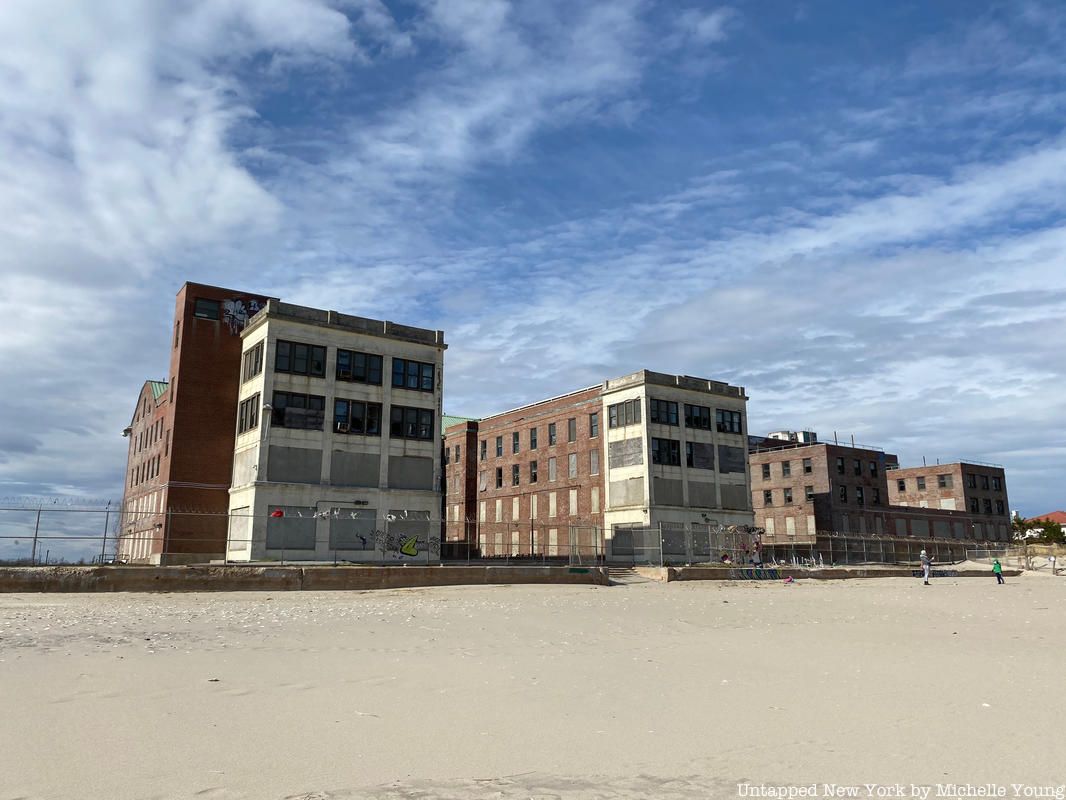
On Rockaway Beach Boulevard, there once sat an abandoned nursing home and hospital called the Neponsit Health Care Center. With the rallying support of Jacob Riis, it was built in 1918 as a home for tubercular children, partly based on the belief that salt water and ocean air could be a cure for the disease. It later became a facility for the elderly and Alzheimers’ patients.
Things took a bad turn on September 7th, 1998, when a storm hit the Rockaway coast and severely damaged the Neponsit Health Care Center. Following orders from Mayor Giuliani, the hospital was evacuated…in the middle of the night! Patients were told to leave without warning and were brought to different hospitals and nursing homes. Two patients ended up dying during the transition. The hospital buildings stood with its hulking mass facing the beach until recently. Although it underwent a major restoration in 2008, the buildings were demolished by the summer season of 2022.
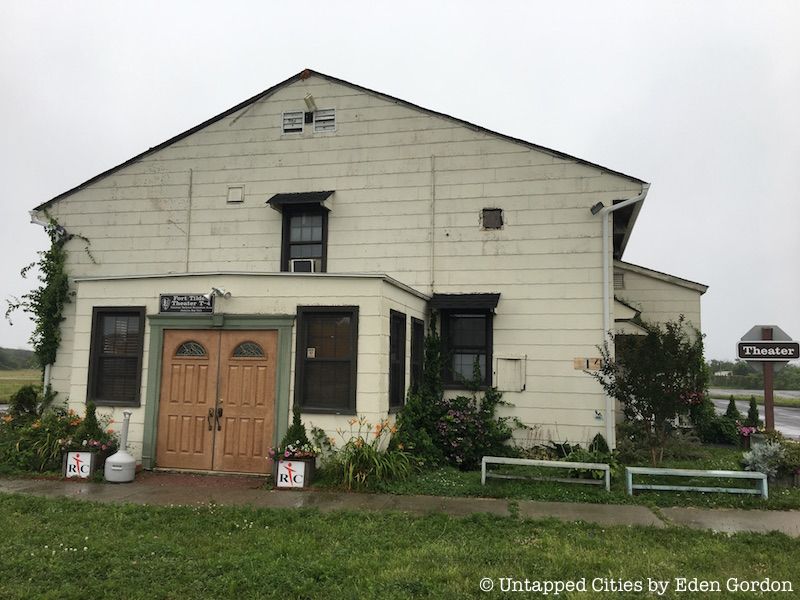
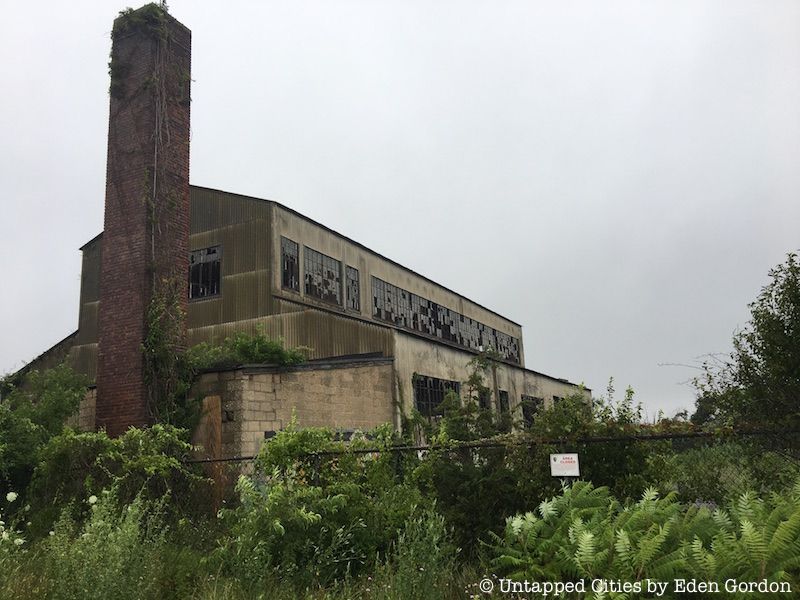
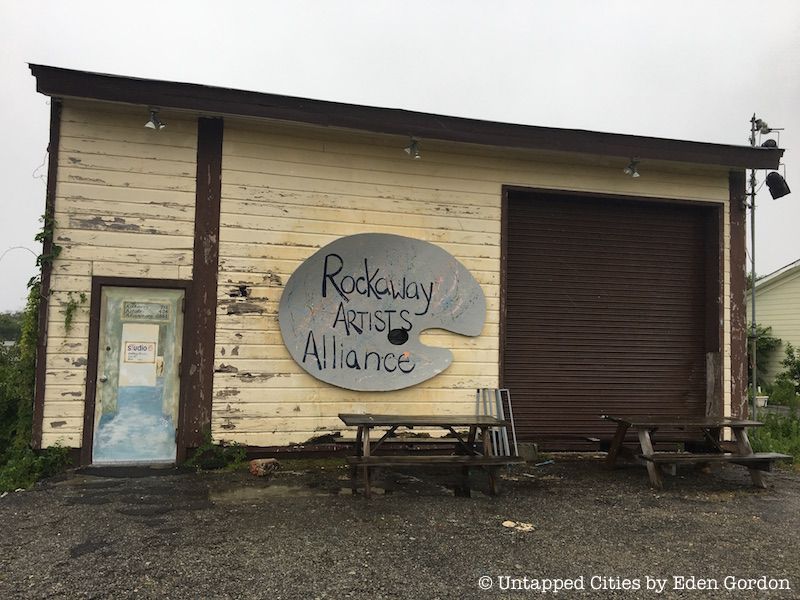
Fort Tilden has served the Rockaway community with its beaches and open spaces since it ceased its military involvement. Many parts of the old army base have been used for arts events. One such place is the Rockaway Theatre Company‘s home base, the Post Theatre, located at Building T4.
Then there’s this abandoned locomotive warehouse, located near the theatre. Shortly after Hurricane Sandy, musician and artist Patti Smith created an installation called “Resilience of the Dreamer” as part of Rockaway!, a program designed to fund repairs after the storm. The warehouse is closed to the public now, but inside it, Smith’s installation remains, having intentionally been left to rot. Close by is the Rockaway Artists Alliance, which promotes appreciation through the arts and facilitates arts events all over the Rockaways.
Artists have long been using the Rockaways as their canvas. In 2002, sculptor Peter Lundberg installed a sculpture overlooking the Marine Parkway-Gil Hodges Memorial Bridge. It is an eerie, lifelike mass that is more reminiscent of an organism than a work of art, and if you don’t look too closely, it seems to undulate like the sea.
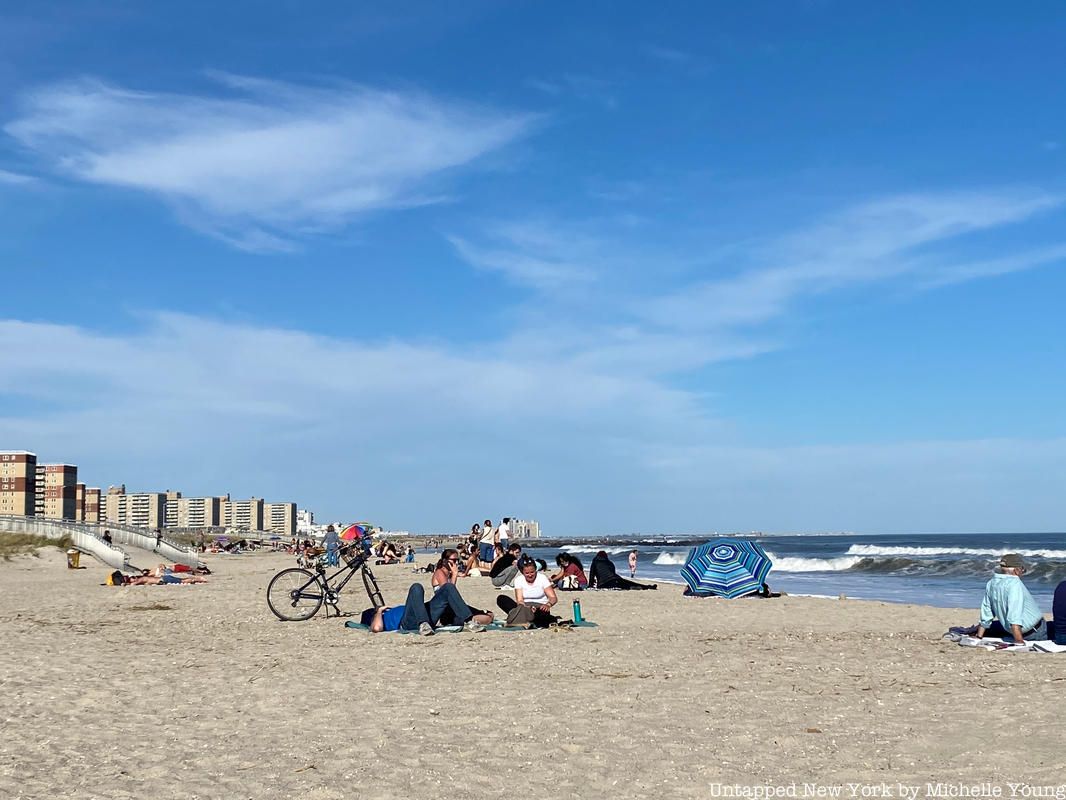
The Princess Anne Steamship which sunk in the early 1900s after getting caught in a snowstorm in the Rockaway Shoals. Although all of its passengers were evacuated, its crew allegedly refused to leave without their luggage. They stayed on the ship for nine days until it split in half and they had to be rescued. The ship still remains under the earth.
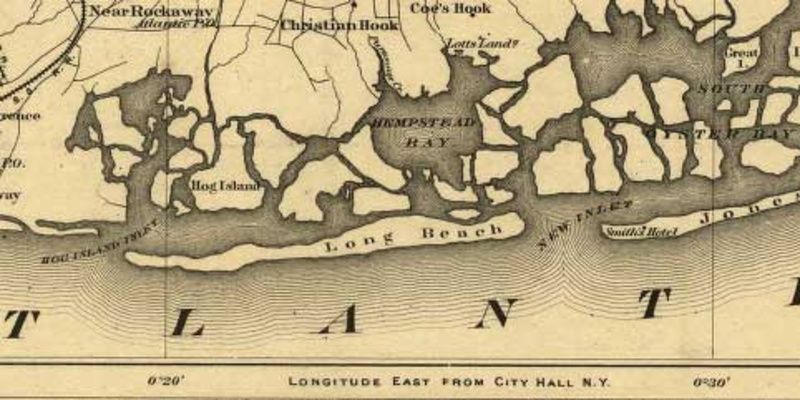
The legendary Hog Island came from nothing, and now is nothing once again. Its origins are as shrouded in mystery as its destruction. Although a New York Times article from December 17th, 1985 (around when the island disappeared) proclaimed that “Hog Island rose in a single night, thirty years ago,” most now believe that the island was formed gradually as currents moved westward depositing sand and gravel.
During its short life, the island was home to a few bath houses and restaurants. But in 1893, a category 2 hurricane known as the “Midnight Storm” heavily damaged the island, and for many years afterwards it was battered by storms until it disappeared, although no one knows exactly when the last bit of the island was reclaimed by the sea that created it.
There are many different theories about how its final end came about. Some say that the 1893 hurricane really did demolish the island in a single night. Others claim that it still functioned as a resort in 1902. Time and history seem to unwind a bit where Hog Island is concerned, and who knows—perhaps maybe it is still out there, hidden in a time warp or wormhole, always just out of reach.
The Rockaways once rivaled Coney Island as a summer destination. For over eighty years, the crown jewel of the Rockaways was Playland Amusement Park. Famous for its Atom Smasher Roller Coaster, featured in the film This is Cinerama, Playland lasted until the 1980s before it was demolished. La Marcus Thompson, who also gave Coney Island its first roller coaster, planted the seeds for the park in 1901 when he created the “L. A. Thompson Amusement Park.” In 1928, it was renamed “Playland.” It once housed a 165-foot pool used for Olympic trials. There were clowns, fun house rides with then-cutting-edge electric trams, and more.
That Playland, at least according to pictures and postcards, was a glorious, bubbling center of entertainment and hedonistic fun. Today, it is a memory. The park began to fail in the 1950s, partly due to high bridge tolls and the razing of nearby bungalows.
The Playland brand was given one last breath of life in the form of the Playland Motel, which opened in 2013 to great fanfare. It branded itself as a “boutique hotel,” and lived up to the name. Each of its twelve rooms was designed by a different artist. It had a white wall for movie projections, a fake beach, and no shortage of glowing palm trees and Christmas lights. For a little while, its guests partied hard, with high-profile DJ’s and other characters soundtracking the cacophony of barefoot bathing-suit-clad guests. In November 2016, the party ended and the motel closed.
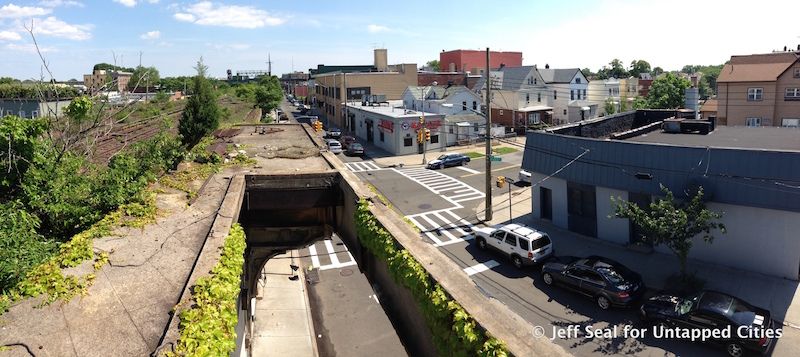
Back when the Rockaways were called “New York’s Playground” or the “Irish Riviera,” previously landlocked passengers could take a train starting at Whitepot Junction that would carry them oceanside attractions. The Long Island Rail Road Rockaway Beach Branch ran from Grand Street in Elmhurst to Rockaway Park-Beach 116th Street, a station that was re-opened as an MTA subway stop along the A and S lines.
When the Long Island Railroad went defunct in 1962, some of what used to be the LIRR was rerouted, but some of it was left untouched, and it soon became overgrown. At that time, the LIRR had been a privately owned company that went bankrupt and was absorbed by the Metropolitan Transportation Authority.
Today, the tracks along the Rockaway Beach Branch are a makeshift park, covered with tall grasses and vines. The “Friends of the QueensWay” hope nto convert the abandoned rail line into a park called the “QueensWay,” named after the old railroad that linked to Rockaway Beach. The organization is trying to reinvigorate the railroad and has finished its first design phase, hoping to create a Highline-type recreational park in Queens.

Patti Smith is arguably one of New York City’s most iconic writers. She has maintained a prominent presence around the city since the 1960s, first as a punk-rocker-poet and more recently as a memoirist. Her novel, “M Train,” provides a series of vignettes that illustrate a small window into her life. It follows her wanderings through cafes and subway stations, and chronicles her exploration of memory and its influence on the current moment. In the book, Smith spends a significant amount of time describing how she fell in love with the Rockaways, first visiting a friend who was opening a coffee shop on the boardwalk, then finding an old house that she knew she wanted to buy on the spot.
Much of the book ruminates on the act of writing about emptiness, of pulling disparate visions into a single narrative. Her journey to the Rockaways, away from the tightly wound inner world of Manhattan, is perhaps emblematic of the way she learns to live with this emptiness, finding poetry in forgotten coffee cups and finding home on a boardwalk way out near the sea.
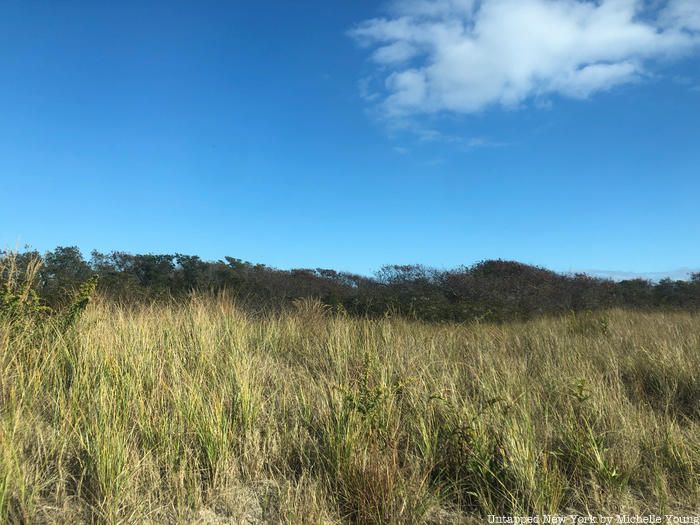
Anyone who says they don’t want to move to New York because of its lack of nature and animals should visit the Rockaways. Closer to the Queens side of the peninsula, you can find a bevy of nature preserves. Averne’s Dubos Point Wildlife Sanctuary and the Brant Point Wildlife Sanctuary are each home to wide varieties of wildlife and natural creatures.
One of the most notable wildlife sanctuaries in New York is the Jamaica Bay Wildlife Refuge, a sanctuary for rare birds. More than 300 rare species call this small area on Broad Channel, Queens their home. The area is full of unique habitats, including salt marshes, fields, woods, and bays, and offers a series of hikes, boat trips, lectures and more for the intrepid explorer. The landscape of the park changed drastically when Robert Moses opened two large water ponds, East Pond and West Pond.

New research published by conservation ecologist Eric Sanderson in the Northeastern Naturalist argues that the Rockaways are about as old as the King James Bible. He arrived at this conclusion by looking at maps dating back as far as 1502, and discovered that the Rockaways were created by waves and storms over the past 400 years. They were originally a collection of marshes that congealed together to form the peninsula that we know today.
During its short existence, the Rockaway peninsula has seen a lot of history. There are dozens of luxury Victorian-style homes and many other picturesque lodgings, such as those pictured above, as well as many towering apartment buildings, shops, beach resorts, forests, beaches, and hidden enclaves to be found. The peninsula was created by the sea, and it may well be the sea that destroys it. But until that day, New York is lucky to have its mysterious beachside peninsula, which has been a home and a source of inspiration for so many.
Next, check out 10 Hidden Beaches of NYC
This article was written by Eden Gordon
Subscribe to our newsletter